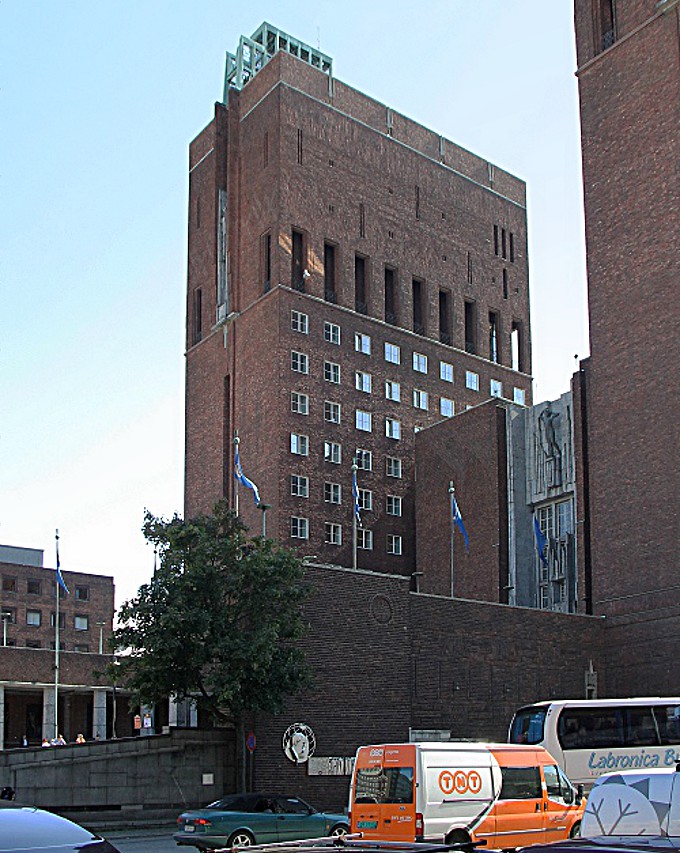Oslo Сity Hall History and Architecture
The most notable building of Fridtjof Nansen square, and perhaps the entire Norwegian capital, is Oslo City Hall (Oslo rådhus) it is an outstanding monument of Scandinavian architecture in the first half of the 20th century. Oslo City Hall consists of a large central building where the city Council holds its meetings and where the premises for holding ceremonies are located, as well as 2 towers in which there are about 450 employees of the city administration. The eastern tower is 66 meters high, and the western one is 63 meters high. Land plot area, at where the town hall is located, it is 4,560 m², the total useful area of the building is 38,000 m². Since 1990 in the town hall every year on December 10 the Nobel peace prize ceremony is taking place.
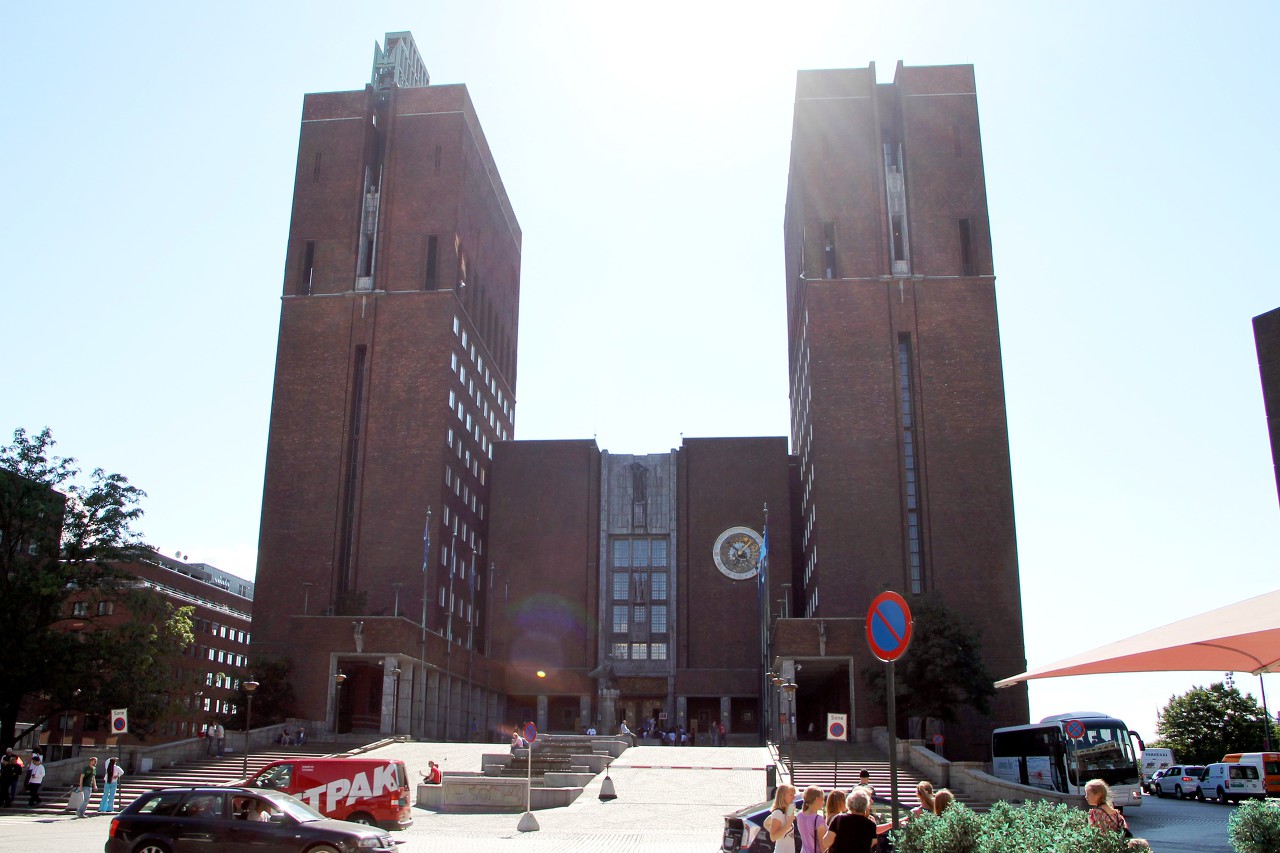
Since the early middle ages, the city administration of Kristiania has not had a permanent residence, occupying temporary premises. It went so far as to say that at one time the city Council met in a wine cellar. After the fire of 1624, king Christian IV ordered to build a special building in the city. This house is now located on the Kristiania square. In 1915, the newly retired mayor of Kristiania, Jerome Heyerdahl, proposed to erect a new building, as the old one was already too small for the administration of a large city. According to his idea, the building was supposed to become a symbol of independent Norway, which left the Union with Sweden 10 years ago. The Parliament supported the idea and a design competition was announced, which ended in 1918 with the victory of architects Arnstein Arneberg and Magnus Poulsson. However, due to financial problems, the project was delayed until the 30s.
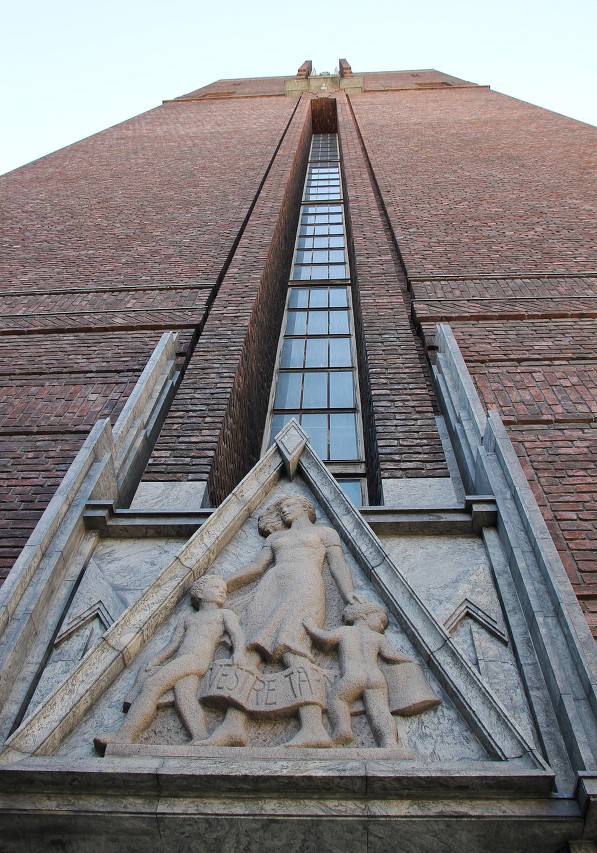
In September 1931, king Haakon VII and crown Prince Olaf laid the Foundation stone for the new building, but construction only began in February 1933. Over a decade and a half, the authors have significantly revised the project towards rationalism, retaining the General concept - a central building and two towers. By 1936, the reinforced concrete frame of the building was built and work began on the construction of brick walls, which continued until the beginning of the war in 1940. The works were resumed in 1947, and the town Hall was officially opened on may 15, 1950. More than eight million bricks were spent on the construction of the building, which were made by hand and therefore differed from each other in color, which added life and texture to the walls. The walls of the town Hall are decorated with many sculptural elements, which I will tell you about in the next article.
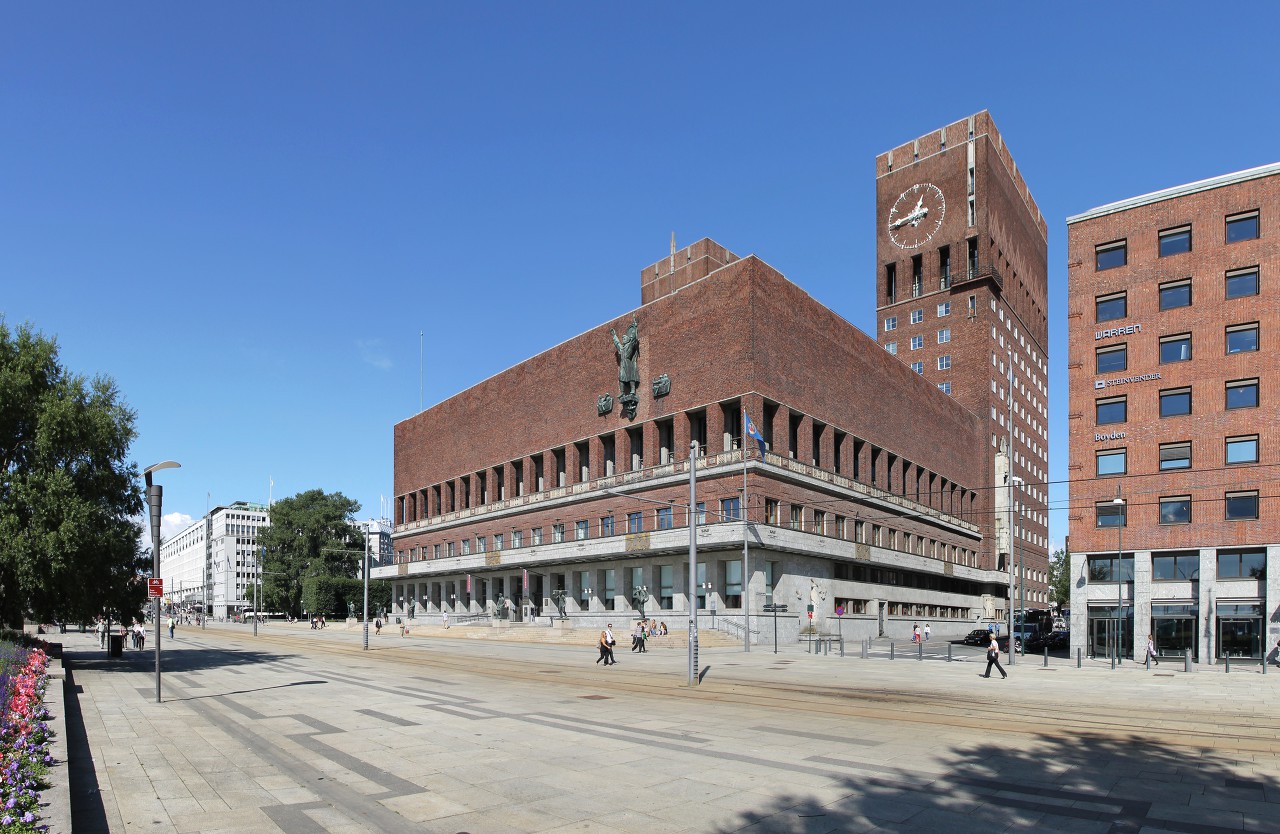
The main entrance to the town hall is located on the side of Nansen square. Two wings of the building form a front courtyard with a fountain in the center.
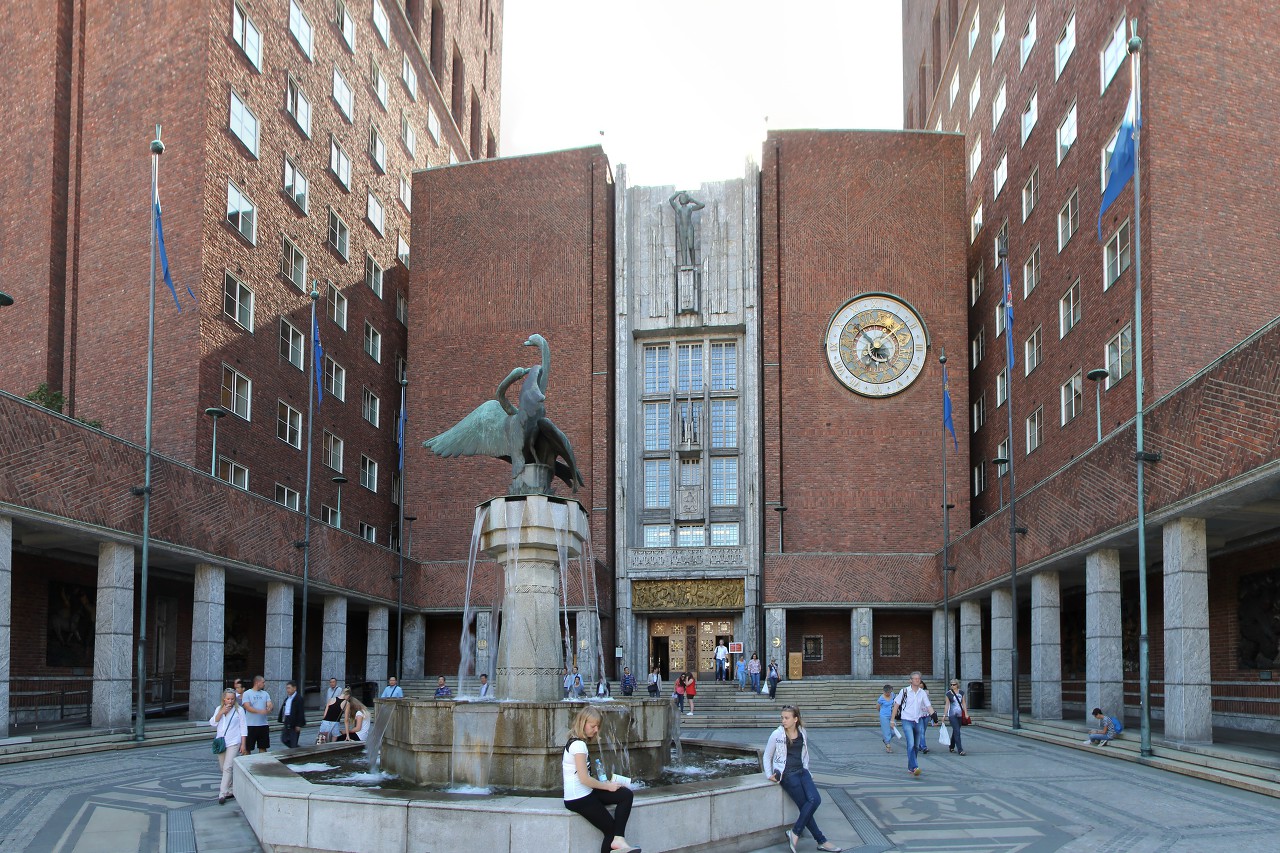
On the right above the portal is a five-meter astronomical clock designed by engineer Olaf Platou and manufactured by the Strasbourg-based Ungerer & Cie company. The zodiac signs adorning the dial are made by sculptor Nils Flakstad . If the hands of the clock show normal time, then the disk with the signs of the zodiac makes a complete revolution in 23 hours, 56 minutes and 4 seconds, showing "starry time".
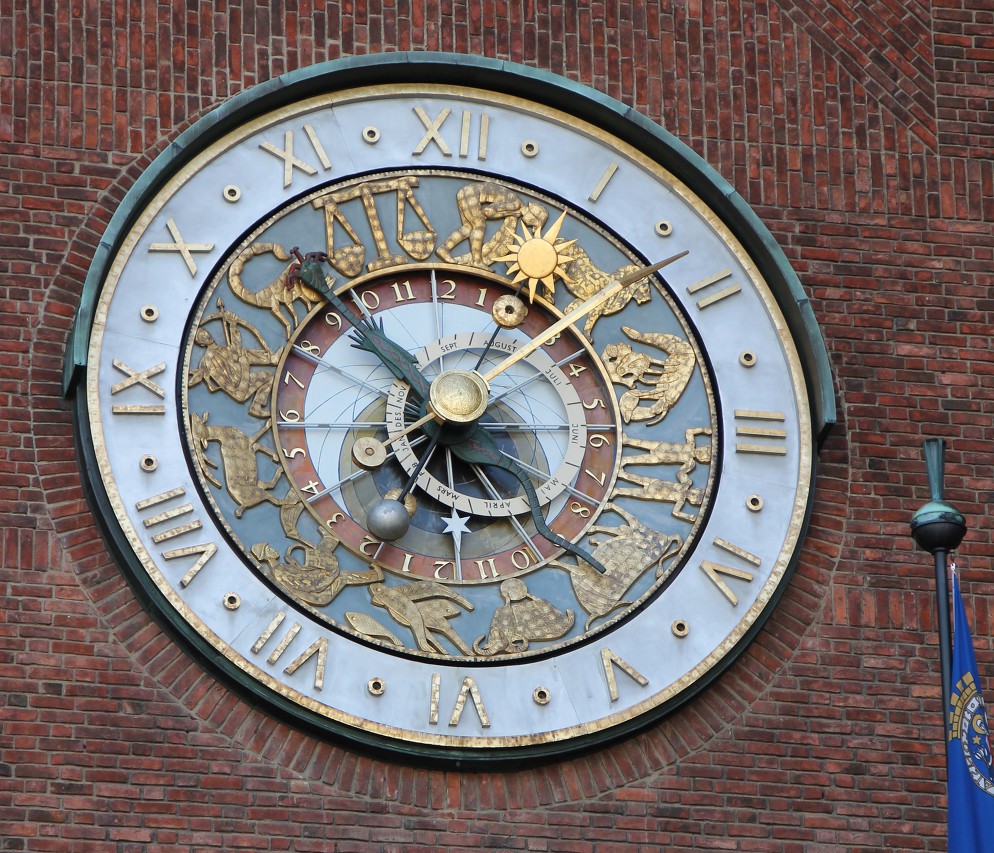
The project of the City Hall also included a complete reconstruction of the surrounding area: the port slums were demolished and in their place a large square was laid out, which opened up a view of the Oslofjord.
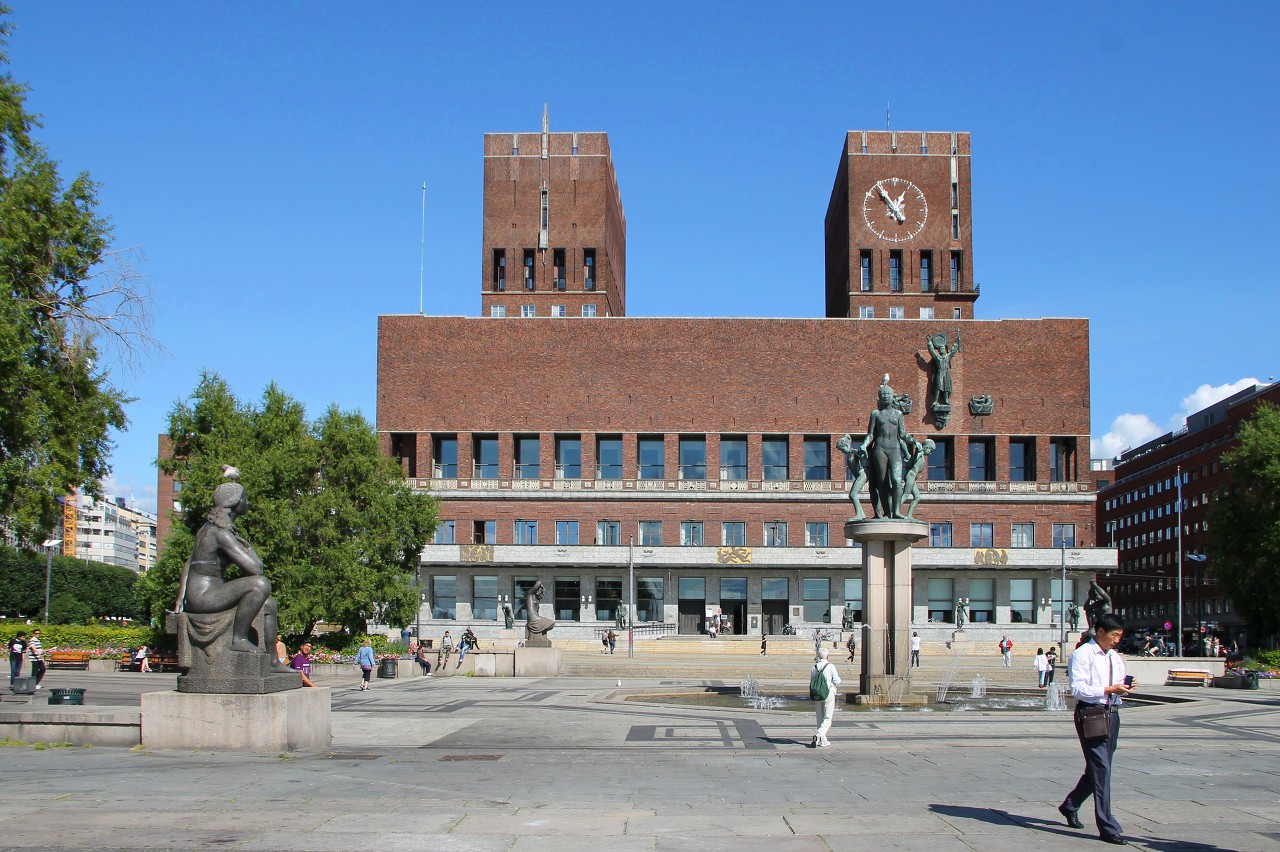
The east tower on the south side carries a huge clock, which plays a tune every hour. On the roof of the tower is a two-tiered belfry with 49 bells. At 6 o'clock in the morning on August 17, 1998, a small Piper Pony plane flew between the towers, which was regarded as air hooliganism. An Amateur pilot said that the trick was inspired by the story of an old pilot who had planned to perform such a feat maneuver on the day of the liberation of Norway in 1945, but for a number of reasons did not carry out the idea.
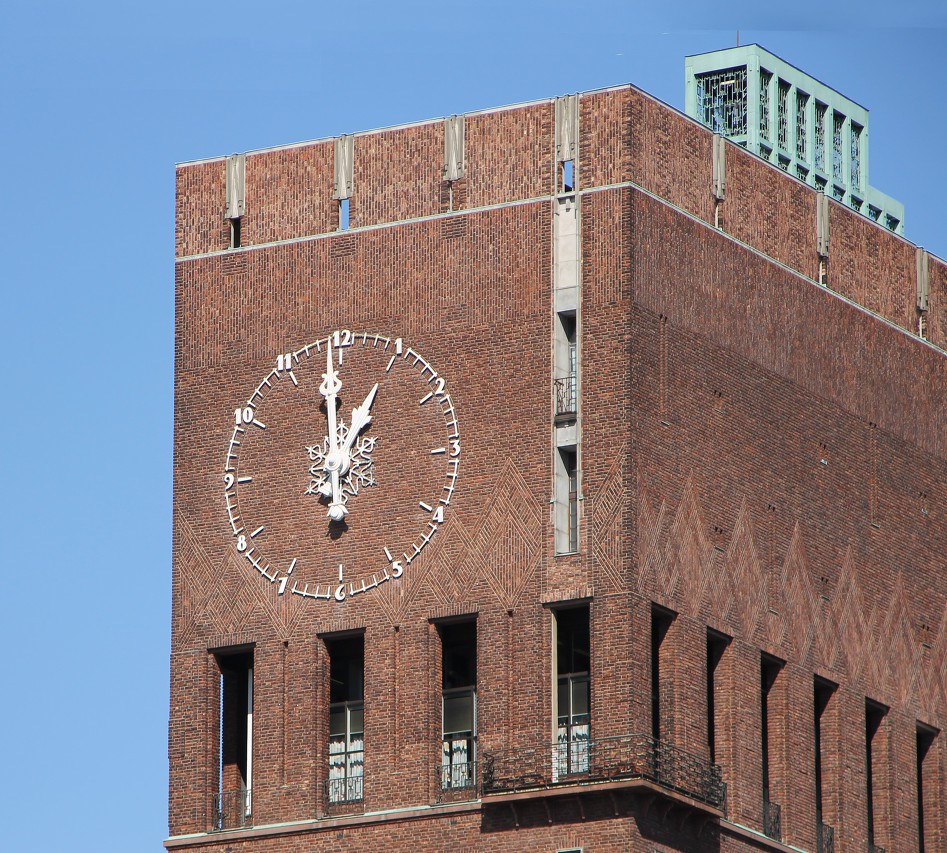
In the City Hall, marriage ceremonies are held, on Wednesday and Friday for residents of Oslo for free, for nonresidents 950 NOK, on Saturday 1800 NOK for everyone. At least one of the newlyweds must have Norwegian citizenship.
